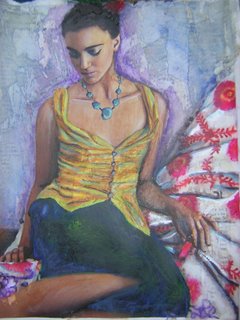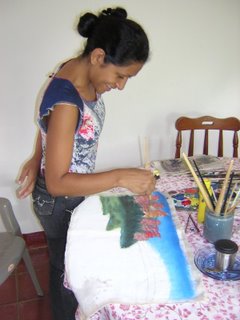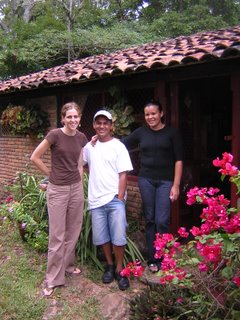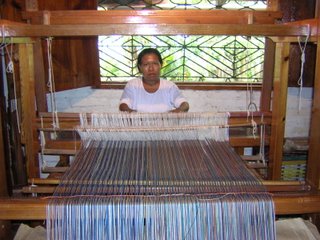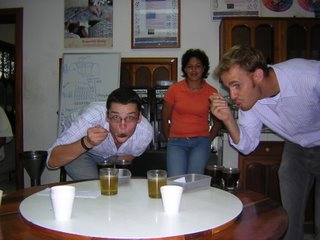 We've been fielding a common question since arriving in Nicaragua. "Have you found a good cup of coffee yet?" Well, here's evidence that Bradley has been putting some of Matagalpa's coffee to the test. Pictured above is our friend Demetrius, from New Jersey, who is living and working in Ocotal at El Centro de Idiomas . Cynthia, Demetrius, Alvaro, Me and a few other friends went for an afternoon to SOLCAFE the coffee processing center run by CECOCAFEN, one of the organizations I am working with this year. Here's Cynthia evaluating coffee just brought down from the mountains.
We've been fielding a common question since arriving in Nicaragua. "Have you found a good cup of coffee yet?" Well, here's evidence that Bradley has been putting some of Matagalpa's coffee to the test. Pictured above is our friend Demetrius, from New Jersey, who is living and working in Ocotal at El Centro de Idiomas . Cynthia, Demetrius, Alvaro, Me and a few other friends went for an afternoon to SOLCAFE the coffee processing center run by CECOCAFEN, one of the organizations I am working with this year. Here's Cynthia evaluating coffee just brought down from the mountains.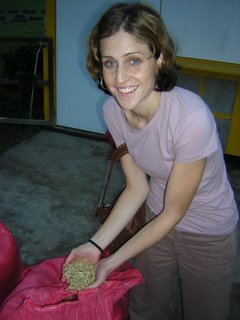
Coffee production/farming is a very labor intensive process. Depending on how much money you have to invest and the scale of your coffee farm you can find a range of commitments to producing high quality beans. Small-scale farmers for one, commonly depend on coffee as their main source of income and invest tons of time (not so much money) in their coffee (which puts food on the table and sends their kids to school). Many of the coffee farmers I work with make somewhere between 400 and 1000 dollars a year before expenses (leaving very little for savings). Pictured below is a farmer who is pulping his community's coffee. He'll work 8 hours a day on this pulper for about 3 months. If the community had the money to invest in a machine, it would cut down on his hours incredibly. Next year they hope they earnings will be enough to do so.
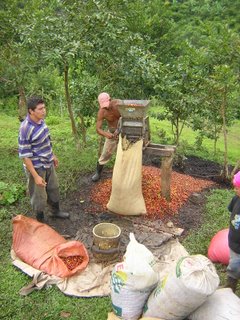
Now that you have some pictures to help you...I'll just say that from the coffee bush in the mountains to the sluuuurrrp, the coffee in your cup passes through a rigorous process. Bradley is certainly not an expert taster, but I'd can honestly say, there is nothing like meeting and working with the humble men and women who have devoted years of their lives to producing the coffee we love.
